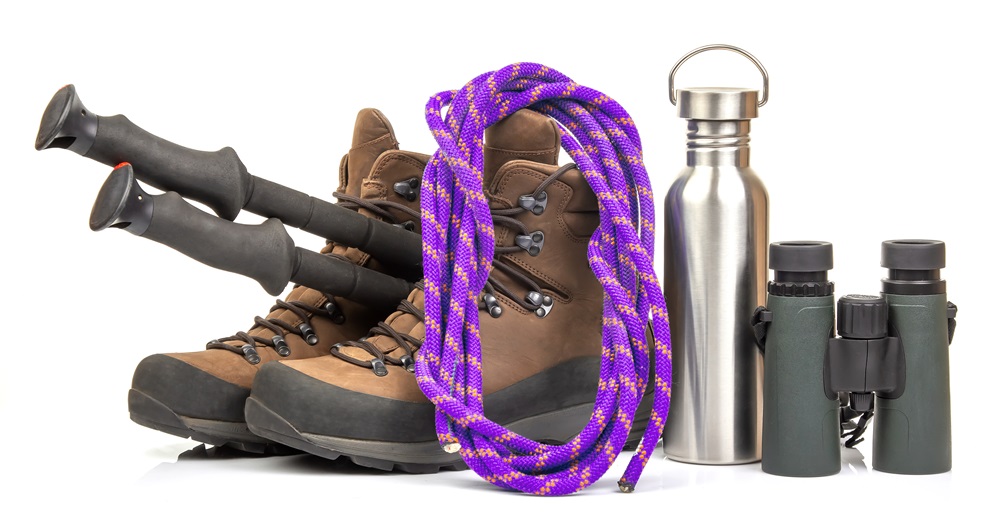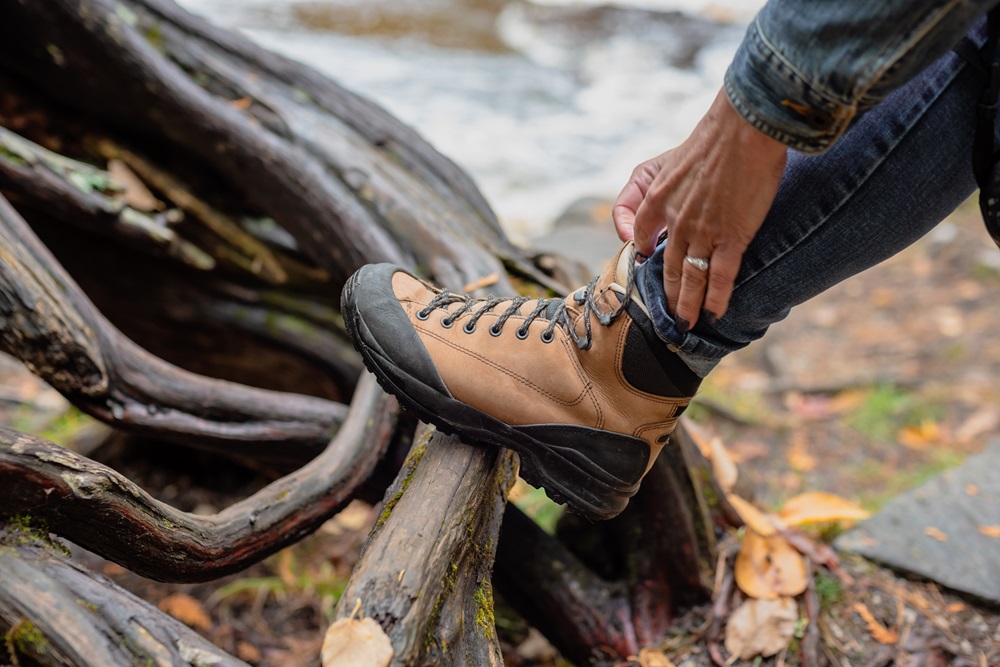Your used hiking boots feel like sponges no matter how long you leave them to dry. They looked great when you bought them secondhand or maybe you’ve had them for years.
Either way, the waterproofing seems dead. Your socks get soaked within minutes on the trail. But here’s the thing—those membranes might not be ruined. You can probably bring them back to life.
What Actually Happens to Waterproof Membranes?
Hiking boots use membranes that are supposed to keep water out while letting sweat escape. The most common ones are made from expanded polytetrafluoroethylene (ePTFE) or polyurethane.
These materials have microscopic pores—small enough to block water drops but large enough for water vapor to pass through.
Over time, these pores get clogged. Dirt, body oils, detergent residue, and minerals from water all build up on the surface. The membrane itself is usually fine.
It’s just buried under gunk. This is why your boots feel permanently wet even though the actual waterproof layer hasn’t failed.
There’s also something called DWR (Durable Water Repellent) coating on the outer fabric. When this coating wears off, the outer material absorbs water and stays wet. This creates a barrier that traps moisture inside your boot.
Even if the membrane works perfectly, you’ll still feel wet because the whole system relies on that outer layer shedding water.
How to Tell If Your Boots Can Be Fixed?
Not every wet boot can be saved. You need to figure out if the membrane is salvageable or actually damaged.
Do a simple test: Pour a small amount of water on the outside of your clean, dry boot. If it beads up and rolls off anywhere, the membrane is probably intact. If water soaks in immediately everywhere, you might have a torn membrane or the DWR is completely gone.
Check for visible damage. Look inside and outside for tears, separated seams, or delamination (when layers peel apart). Small holes can sometimes be patched. Large tears or widespread delamination means you need new boots.
Feel the texture. If the outer fabric feels stiff, crusty, or has white mineral deposits, that’s buildup you can clean. If it feels papery thin or is actually flaking apart, the materials have degraded beyond repair.
The Cleaning Process That Actually Works
Most people skip this part or do it wrong. Cleaning is the most important step. You can’t reactivate waterproofing over dirt.
Remove the laces and insoles. Use lukewarm water and a technical gear cleaner designed for waterproof fabrics. Regular detergent leaves residue that makes the problem worse.
Scrub the entire boot—inside and out—with a soft brush. Pay extra attention to flex points and seams where dirt accumulates.
Rinse thoroughly. And I mean thoroughly. Rinse way longer than you think you need to. Leftover soap is one of the main reasons people fail at this process.
Let them air dry completely at room temperature. Don’t use direct heat. Dryers, radiators, and campfires can damage the membrane and adhesives.
This takes 24-48 hours. Yes, it’s long. But you need them completely dry.
Here’s what the cleaning process removes:
| Contaminant Type | How It Affects Boots | Removal Method |
| Body oils and sweat | Clogs membrane pores from inside | Warm water and technical cleaner |
| Trail dirt and mud | Blocks DWR coating effectiveness | Soft brush scrubbing |
| Detergent residue | Attracts and holds water | Multiple thorough rinses |
| Mineral deposits | Creates hard water-attracting layer | Warm water soak and scrubbing |
Reactivating the DWR Coating
Once your boots are clean and dry, you can work on the outer water repellent layer. The DWR coating often just needs heat to reactivate. The original treatment is still there—it’s just not working anymore.
Put your clean, dry boots in a dryer on low heat for 20 minutes. Or use a hairdryer on low setting, keeping it moving constantly about 6 inches from the fabric.
The heat reorganizes the DWR molecules so they stand up again and repel water.
Test them after this. If water beads up now, you’re done. If it still soaks in, the DWR is actually worn away and you need to reapply it.
For reapplication, you have two options: wash-in treatments or spray-on products. Wash-in treatments coat everything evenly but add a layer inside the boot too (which you don’t really want). Spray-on products give you more control but require careful application.
If you spray, do it outside or in a well-ventilated area. Apply a light, even coat to the entire outer surface.
Don’t oversaturate—you want damp, not dripping. Let it dry completely, then apply heat again to activate it.
What About the Inside of Your Used Hiking Boots?
Sometimes the problem isn’t the waterproof layer failing to keep water out. It’s the lining failing to move moisture out.
When the inner lining gets coated with body oils and sweat residue, vapor can’t escape. This makes your feet sweat more, which makes the inside feel wet.
Clean the inside as thoroughly as the outside. Use the same technical cleaner. Scrub the lining, especially around the heel and toe box where your feet create the most moisture.
Some people use a vinegar-water solution (1:4 ratio) to break down oils, but rinse extremely well afterward.
After cleaning, you can treat the inside with an antimicrobial spray designed for footwear.
This doesn’t help with waterproofing directly, but it prevents the bacterial buildup that creates odor and breaks down materials faster.
How Long Do These Fixes Last?
You’re not getting brand-new performance back. A properly restored boot might give you another season or two of decent waterproofing, depending on how often you hike and in what conditions.
The DWR treatment will wear off with use. You’ll need to reapply it every 10-20 hikes, or whenever you notice water soaking in instead of beading up.
The good news is that once you’ve done the deep clean, maintenance reapplication is quick.
The membrane itself can last years if you keep it clean. But if your boots are old enough that the materials are breaking down, no amount of treatment will help.
Rubber that’s cracking, fabric that’s tearing, or adhesives that are failing mean you need new boots.

When to Give Up and Replace Them?
Some situations aren’t worth fixing. If you’ve spent multiple hours cleaning and treating your boots and they’re still wet after one short hike, something is structurally wrong.
Boots that are actively falling apart won’t benefit from waterproofing treatment. Delaminated soles, torn uppers, or separated seams need professional repair or replacement.
Also consider the cost-benefit. If you spent $30 on used boots and would spend $25 and half a day restoring them, maybe that’s fine.
But if the boots weren’t great to begin with, you might be better off putting that time and money toward new ones.
Keeping Boots Waterproof After Restoration
Once you’ve brought your boots back, maintain them. Clean them after muddy hikes—just a quick rinse and brush makes a huge difference.
Store them dry in a cool place, not in a hot car or damp basement.
Reapply DWR treatment when you notice water absorption increasing. Don’t wait until they’re soaked again. Catching it early makes the treatment more effective and last longer.
Your restored hiking boots can handle wet trails again if you maintain them properly.
Regular cleaning every few months, DWR reapplication as needed, and proper drying after each hike will keep them working. It’s not permanent, but it extends their useful life significantly.
Frequently Asked Questions
Can I make my used hiking boots waterproof again?
Yes! Most “leaky” boots just have clogged pores or worn DWR coating. A deep clean with technical cleaner and reactivation or reapplication of DWR can restore waterproofing for another season or two.
How do I know if my waterproof membrane is actually damaged?
Pour a little water on your clean, dry boot. If it beads up anywhere, your membrane is fine. If it soaks in instantly or you see tears, delamination, or flaking inside, the membrane is likely damaged.
What’s the best way to clean used hiking boots?
Remove laces and insoles, then scrub with lukewarm water and a technical gear cleaner. Avoid detergents—they clog membranes. Rinse thoroughly and let boots air dry completely for 24–48 hours.
How often should I reapply waterproofing to my boots?
Reapply DWR every 10–20 hikes or whenever water stops beading up. Regular reapplication and cleaning will keep your used hiking boots performing like new for longer.
When should I stop trying to fix my used hiking boots?
If your boots still leak after deep cleaning and DWR treatment—or if they have cracks, delaminated soles, or tearing fabric—it’s time to replace them. No treatment can fix structural damage.


